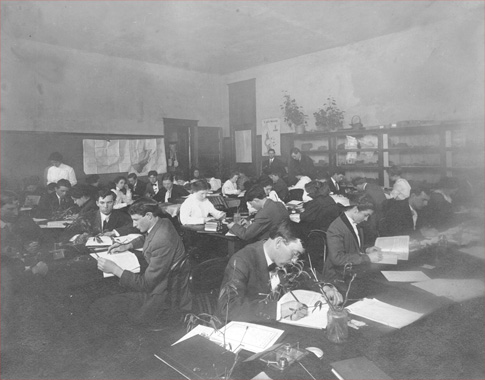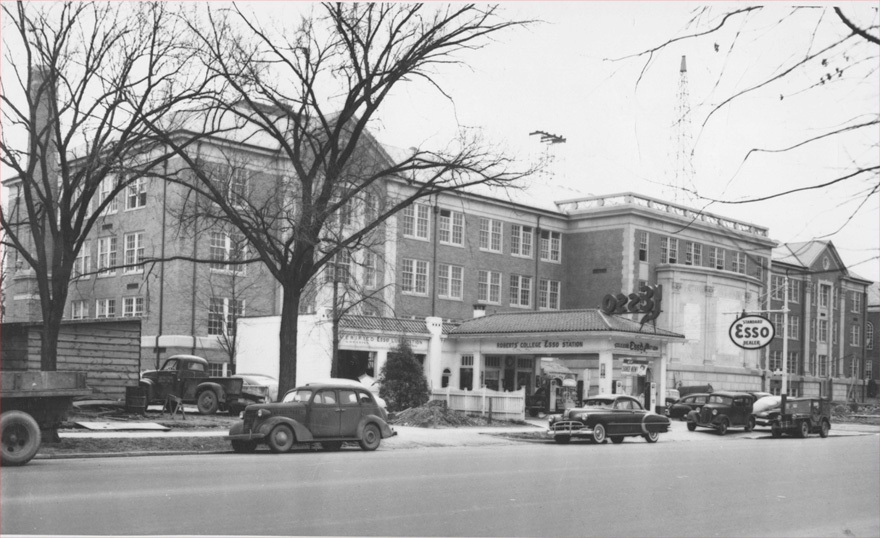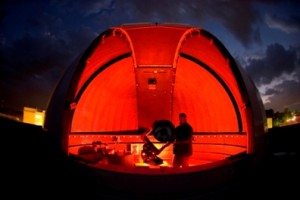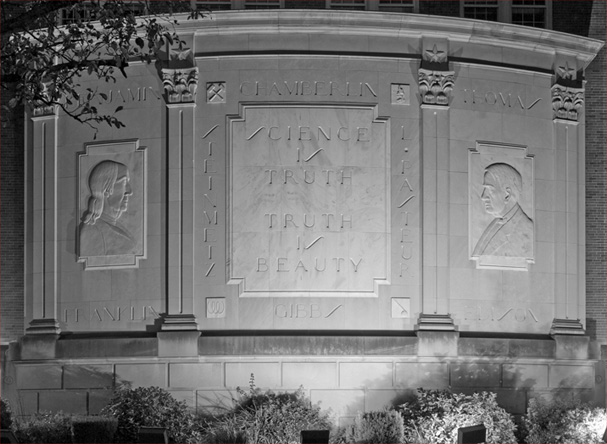![Web badge REVISED[1]](https://wvresearch.org/wp-content/uploads/2013/06/Web-badge-REVISED1.jpg) West Virginia is celebrating 150 years of statehood. Learn about the year-long celebration at wv150.com.
West Virginia is celebrating 150 years of statehood. Learn about the year-long celebration at wv150.com.
Meanwhile, we are compiling a list of 150 of the great milestones in West Virginia’s science, technology, engineering and mathematics (STEM) history. Here’s a start, but we’ve got a long way to go.
Submit your suggested milestones through our contact page below. Some of West Virginia’s greatest STEM milestones so far include:
1867: West Virginia University is established.
1871: An article of incorporation for a school to be known as Shepherd College, designed to instruct students “in languages, arts, and sciences,” was drawn up by the Board of Trustees. Joseph McMurran, principal, and two assistant professors were hired to teach the 42 students who began classes in September 1871 in Shepherdstown.
1891: West Virginia State University is founded as the West Virginia Colored Institute (WVCI), one of 17 land-grant institutions authorized by Congress to provide for the education of black citizens in agriculture and the mechanical arts.
1892: WVU begins an engineering program.
1899: Austin Curtis, Sr. becomes first director of agriculture and is focused on advancing agricultural studies at West Virginia Colored Institute. By 1912 his program would be ranked first among peer institutions.
1912: West Virginia University School of Medicine is established with 13 students and two full-time professors. The curriculum is a two-year program.
1913: A mining extension program is established within the West Virginia University College of Engineering.
1915: The nation’s chemical industry gets its start in the Kanawha Valley.
1915: West Virginia Colored Institute’s name is changed to West Virginia Collegiate Institute and begins to offer college degrees. The school also begins to offer extension programs.
1916: Marshall‘s science program moves to a new building, Northcott Hall, the first building to be constructed as a separate unit from the campus’s Old Main complex.
1927: WVU’s first female engineering graduate, Carrie Virginia White (nee Dye), receives her B.S. with a concentration in electrical engineering.
1927: West Virginia Collegiate Institute (now W.Va. State U.) becomes first 1890 institution to be fully accredited. By 1991 it would have the longest continuing accreditation, by the North Central Association, of any state supported colleges and universities in West Virginia.
1929: West Virginia Collegiate Institute (now W.Va. State U.) becomes West Virginia State College. The school quickly becomes recognized as one of the leading public institutions of higher education for African-Americans in the country.
1930: The WVU School of Mines separates from the College of Engineering.
1931: Emma Myers, the third woman to graduate from the WVU College of Engineering, receives a B.S. in chemical engineering; two years later, she receives an M.S. in the discipline.
1936: West Virginia College of Pharmacy established at WVU.
1945: Alderson Broaddus College in Phillipi develops the first collegiate nursing program and the first radiologic technology program in West Virginia.
1949: Union Carbide Corporation establishes its Technical Center in South Charleston, which becomes the company’s worldwide research and development location and develops thousands of patents for chemicals and chemical manufacturing processes.
1949: Shepherd College granted authority to award the bachelor of science degree.
1950: The new Science Hall is dedicated at Marshall University, marking completion of the first new building on campus in more than a decade.
1951: The State Legisl ature passes a bill calling for the creation of a four-year medical school, a school of dentistry, and a school of nursing. Gov. Okey L. Patteson designates Morgantown as the home of the new health sciences schools.
ature passes a bill calling for the creation of a four-year medical school, a school of dentistry, and a school of nursing. Gov. Okey L. Patteson designates Morgantown as the home of the new health sciences schools.
1952: West Virginia University Institute of Technology’s Bachelor of Science degree in engineering is authorized.
1954: WVSC gains national recognition when the campus voluntarily desegregates when 185 white students register. The consequence of this decision for West Virginia State College was a rapid transition to an integrated institution serving a predominantly white, commuting, and older student population.
1959: First radio telescope begins operating at what is to become the National Radio Astronomy Observatory in Greenbank.
1960: WVU’s Health Sciences Center and University Hospital opens.
1961: The Engineering Sciences Building is completed on WVU’s Evansdale Campus.
1962: WVU’s Dr. Herbert Warden performs the state’s first open heart surgery.
1963: The National Youth Science Camp is founded as part of West Virginia’s centennial celebration.
1965: The Atomic Energy Commission gives WVU Tech a grant to build a carbon pile reactor.
1965: The National Science Foundation provides funding for the construction of a concrete laboratory at WVU, one of the largest and most complete concrete laboratories in the eastern United States at the time.
1966: Planning of the Personal Rapid Transit (PRT) system at WVU begins.
1967: WVU Tech’s Engineering building is completed.
1968: WVU Tech’s civil, electrical and mechanical engineering programs were accredited by the Engineers Council for Professional Development.
1968: Alderson Broaddus College initiates the nation’s first four-year medical science program for physician assistants.
1971: J.W. Ruby donates the first laser to the WVU’s Division of Ophthalmology.
1972: WVU Tech’s chemical engineering program is accredited by Engineers Council for Professional Development.
1975: The PRT opens at WVU, transporting students to and from the Downtown and Evansdale campuses.
1977: Shepherd College opens Stutzman-Slonaker Hall, a new classroom for biological sciences and mathematics.
1979: U.S. Congress establishes EPSCoR, the Experimental Program to Stimulate Competitive Research as part of the National Science Foundation. The goal of EPSCoR is to broaden scientific investment. West Virginia is a charter state in the program.
1982: WVU Tech’s electronic engineering technology program accredited by Accreditation Board for Engineering and Technology.
1983: WVU pulmonologists are among the first in the country to use laser therapy to relieve lung obstructions caused by cancer.
1983: WVU Tech completes a two-story addition (23,000 square feet) to its Engineering Lab.
1985: WVU begins offering the first Magnetic Resonance Imaging (MRI) in the state.
1987: The Marshall University Research Corporation is founded.
1990: What would grow into the NASA-sponsored Classroom of the Future begins at Wheeling Jesuit University with the creation and delivery of NASA STEM education materials to teachers and students in the state.
1990: The Mineral Resources and Engineering Research buildings at WVU are completed.
1991: The NASA West Virginia Space Grant Consortium is established. With WVU as the lead institution, the Consortium includes seven universities and four colleges in West Virginia and aims to enhance the state’s competitiveness, interest, and activities in science, engineering, and space-related education.
1992: Bone marrow transplant program begins at WVU Hospitals.
1992: Construction begins on the National Research Center for Coal and Energy at WVU.
1993: WVU’s Health Sciences and Technology Academy (HSTA) is created, helping high school students from all over the state explore health careers.
1994: Shepherd University begins construction on the first phase of the Robert C. Byrd Science and Technology Center. Phase 2 begins the following year.
1994: The Erma Byrd Center for Educational Technologies opens at Wheeling Jesuit University. The center provides educators, students, and adult learners with science curriculum, educational research and evaluation, and professional development through projects funded by NASA, the National Science Foundation, the National Institutes of Health, the U.S. and W. Va. Departments of Education, the Mine Safety and Health Administration, and National Institute for Occupational Safety and Health among many others. The Center is the home of the NASA-sponsored Classroom of the Future, impacting millions of students in all 50 states and many countries.
1994: The Challenger Learning Center of Wheeling becomes the first, and still only, Challenger Center for Space Science Education in the state. More than 100,000 students across the United States and 15 countries have flown simulated space missions.
1995: At WVU, the College of Minerals and Energy Resources merges with the College of Engineering to form the College of Engineering and Mineral Resources.
1995: Shepherd University founds the Computer and Information Sciences Department with a comprehensive major in computer and information sciences.
1998: The Rahall Transportation Institute at Marshall University is one of 33 University Transportation Centers created by the U.S. Congress. Engineers at the institute focus on advanced transportation technology, leveraging resources and employing strategic processes to improve the economic competitiveness of the Appalachian Region and the nation through its connections to the national and global transportation system.
1999: Shepherd University’s Institute for Environmental Studies is approved.
2000: A 10,000 gallon Thermophilic Anerobic Digester is donated to West Virginia State University by the W.Va. Department of Agriculture. It is moved from Moorefield to campus and becomes cornerstone of new land-grant research programs.
2001: WVU Tech’s civil engineering technology and mechanical engineering technology programs received Accreditation Board for Engineering and Technology accreditation.
2001: In response to the terrorists attacks on September 11, WVU’s Lane Department of Computer Science and Electrical Engineering works to develop a digital forensics program, ultimately creating a graduate certificate in computer forensics and collaborating with law enforcement to establish the West Virginia Cyber Crime Cooperative.
2001-2003: West Virginia State University erects research greenhouses on campus.
2003: A WVU School of Medicine study of over 2,500 retired professional football players shows a strong link between concussions and depression.
2003: World class scientists from the former Union Carbide Corporation form the Mid-Atlantic Technology, Research & Innovation Center (MATRIC) form to conduct market-driven research and development and to commercialize resulting products and services. The non-profit research group is based in Building 740 at the West Virginia Regional Technology Park.
2004: The West Virginia Legislature establishes the Research Challenge Fund.
2004: Investigators at Marshall University, in partnership with researchers at West Virginia University, are awarded funding through the IDeA Network of Biomedical Research Excellence—a competitive federal research program established by the National Institutes of Health to help increase competitiveness for federal biomedical research funding. Since 2004, the INBRE project in West Virginia has been awarded more than $35 million, resulting in an estimated overall economic impact of more than $80 million.
2004: Biotechnology company Vandalia Research is founded in Huntington as a spin-out from Marshall University. Vandalia is helping companies develop vaccines, diagnostics, bio-agriculture, and gene therapies for existing and emerging markets.
2005: Marshall University’s Forensic Science graduate program becomes one of the first forensic science academic programs in the country to achieve accreditation.
 2005: Shepherd University opened an observatory on the roof of the Robert C. Byrd Center for Legislative Studies. The funding for the project was provided by an EPSCoR Innovation Grant to Dr. Jason Best, professor of astronomy and astrophysics.
2005: Shepherd University opened an observatory on the roof of the Robert C. Byrd Center for Legislative Studies. The funding for the project was provided by an EPSCoR Innovation Grant to Dr. Jason Best, professor of astronomy and astrophysics.
2006: Concord University’s Division of Natural Sciences receives a WV-INBRE grant for the purchase of a liquid chromatography system to separate and analyze plant bioactive compounds.
2006: Concord University receives Appalachian Regional Commission support to purchase equipment and software intended to assist West Virginia business and industry to use the principles of virtual reality.
2007: The Division of Science and Research is created within the Higher Education Policy Commission to direct EPSCoR and state funded academic research programs.
2007: West Virginia State University establishes research presence with Mid-Atlantic Technology, Research & Innovation Center at what is now the W.Va. Regional Technology Park. Separately, WVSU receives over $1.1million in competitive awards from USDA National Institutes of Agriculture’s 1890 Capacity Building Grants Program.
2007: The state-of-the-art Robert C. Byrd Biotechnology Science Center opens on the campus of Marshall University. Designed to facilitate interdisciplinary research between the College of Science and the university’s medical school, this 200,000-square-foot research and educational facility houses biomedical scientists and their students studying cancer, cardiovascular disease and other conditions prevalent in West Virginia.
2007: NASA (and later the National Science Foundation) funds the Center for Educational Technologies at Wheeling Jesuit University to invent and deploy what has become the nationally recognized CyGaMEs approach to instructional game design and embedded assessment.
2007: Concord University Environmental Geosciences program awarded grants from the National Science Foundation and the American Chemical Society Petroleum Research Fund to involve undergraduates in structural geology field research in the southern Rockies.
2007: Dr. Charles Vest, who earned a B.S. in mechanical engineering from WVU in 1963, is named president of the National Academy of Engineering.
2008: The State Legislature establishes the Research Trust Fund, allocating $50 million in funds to be endowed and matched by private funds.
2008: The Rahall Technology Center is dedicated at Concord University.
2008: The West Virginia Clinical and Translational Institute is established.
2008: Progenesis Technologies LLC is founded based on technology developed at Marshall University. Headquartered in Huntington, the company provides natural, biodegradable polymers for industrial and medical applications through genetic engineering of bacteria.
2008: The Arthur Weisberg Family Engineering Laboratories are dedicated on the campus of Marshall University. The 16,000-square-foot facility houses laboratories to support courses in material testing, soil mechanics, hydraulics and environmental engineering. The building also has a visualization lab, where simulated environments are created for specialized training and research.
2008: WVU completes an addition to the Engineering Sciences Building.
2009: The Department of Mining Extension dedicates its simulated underground coal mine at WVU’s Academy for Mine Training and Energy Technologies at Dolls Run, W.Va.
2010: The State of West Virginia receives a five-year, $20 million Research Infrastructure Improvement Grant, the largest single EPSCoR grant ever received in the state.
2010: The Concord University Environmental Geosciences Program is awarded a collaborative grant with the W.Va. Geological and Economic Survey, the National Park Service and WVU to produce geologic maps to assist with land-use planning and cataloging the resources of the New River Gorge National River and Bluestone National Scenic River.
2010: The State’s Higher Education Policy Commission receives from Dow Chemical Company a gift of the former Union Carbide Technical Center and establishes the West Virginia Regional Technology Park, a hub for innovation and education.
 2010: Marshall University’s bachelor of science degree program in engineering is accredited. The university’s Board of Governors voted to approve the new program in 2006, with the first class graduating three years later.
2010: Marshall University’s bachelor of science degree program in engineering is accredited. The university’s Board of Governors voted to approve the new program in 2006, with the first class graduating three years later.
2010: Shepherd University’s Dr. Edward Snyder, professor of environmental and physical sciences, is named the West Virginia Professor of the Year.
2010: Concord University Division of Natural Sciences awarded a $100,000 grant from the WV Research Trust Fund to initiate a summer faculty-student STEM research program.
2011: The Charles H. McKown Jr. Translational Genomic Research Institute opens at the Marshall University Joan C. Edwards School of Medicine. Located on the top floor of the Edwards Comprehensive Cancer Center, it comprises more than 10,000 square feet of research space and features advanced scientific equipment, including a next-generation DNA sequencer. The institute is also the home of the West Virginia Cancer Genomics Network.
2011: A new geochemistry lab opens at Concord University featuring West Virginia’s only electron microprobe.
2011: Benjamin Statler, mining engineering alum, and his wife Jo, donate $34 million, the largest single-gift commitment ever to WVU and the College is renamed the Benjamin M. Statler College of Engineering and Mineral Resources.
2012: WVSU receives over $1.6 million in competitive awards from USDA National Institutes of Agriculture’s 1890 Capacity Building Grants Program, the largest amount the university has ever received in one funding cycle.
2012: Concord University’s electron microprobe receives a $75,000 solid-state, energy dispersive X-ray spectrometer and digital imaging system. A $40,000 WV Innovation Grant awarded in 2011 helped fund the upgrade.
2012: Marshall University faculty members are awarded a grant from the National Science Foundation to re-curate and modernize the West Virginia Biological Survey Museum, preserving it for future generations. Housed in the university’s College of Science, the museum houses the nation’s largest collection of mammals, amphibians and reptiles from West Virginia.
2012: Marshall University spin-out company Vandalia Research announces a new subsidiary, Crosscutting Concepts LLC. Located in Huntington, the new company was formed to develop, manufacture and market innovative, hands-on science education products for high school and post-secondary education.
2012: BLiSS Sim, the first science education app developed by the NASA-sponsored Classroom of the Future at the Center for Educational Technologies at Wheeling Jesuit University, debuts. Within a year the app is downloaded almost 8,000 times, engaging youth and adults in the challenges of creating life-support systems for a lunar base.
2012: A WVU surgeon implants a diaphragmatic pacemaker in a pediatric patient, making West Virginia University’s medical center only the second in the country to use this device on a young patient.
2013: A $15,000 mini-grant from the Center for Undergraduate Research in Mathematics (CURM) at Brigham Young University is awarded to Concord University for faculty and student research in graph structure theory.
2013 WVSU receives $300,000 Donation from American Electric Power and $100,000 match from the W. Va. Higher Education Policy Commission for “Research Rookies” and bioenergy program.
Do you have some science history to add to our timeline? Let us know:
https://wvresearch.org/contact
# # #
Visit our Press Room for more news about science and research in West Virginia.